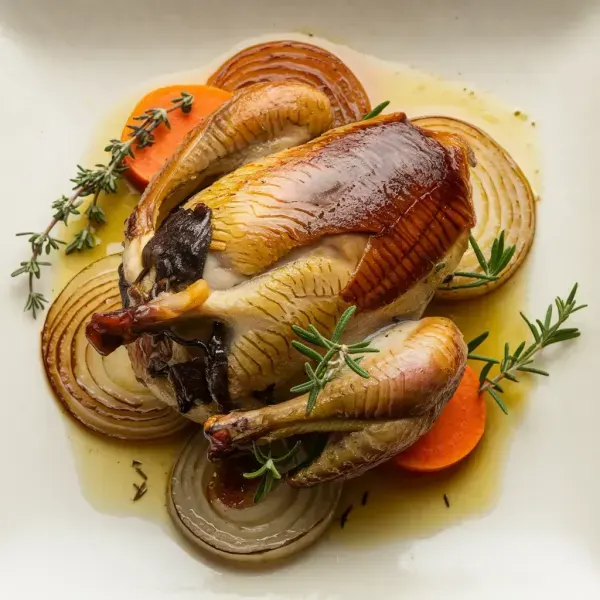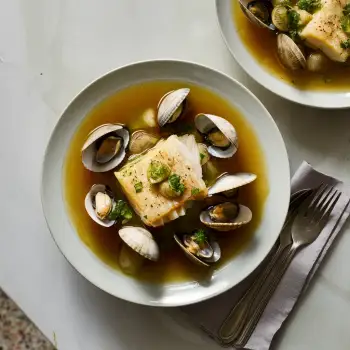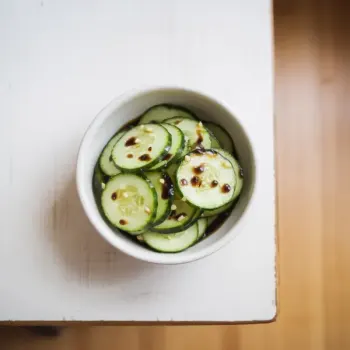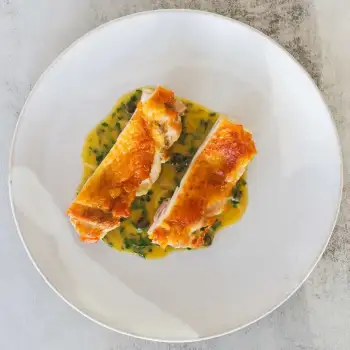
 50 minutes
50 minutesA traditional Castilian dish featuring partridges cooked in a flavorful white wine sauce with vegetables and herbs.


Small Partridges, cleaned and salted
each
to taste
tablespoons
Large Onion, chopped
each
Large Carrots, thinly sliced
each
Garlic Clove, sliced in half
each
cups
cups
each
sprigs
Black Peppercorns
each
1. Prepare Partridges
Singe any remaining feathers on the partridges, rinse them well under cold water, and lightly salt them.
2. Brown Partridges
In a wide casserole, heat the olive oil over medium-high heat. Once the oil is hot, add the partridges and brown them on all sides. Once browned, remove the partridges from the casserole and set them aside.
3. Sauté Vegetables
Using the same oil, reduce the heat to medium-low and add the chopped onion, thinly sliced carrots, and halved garlic cloves. Sauté these vegetables for about 10 minutes, or until the onion softens.
4. Add Liquids and Seasonings
Pour in the dry white wine and water, and add the bay leaves, a sprig of thyme, a pinch of salt, and the black peppercorns. Stir gently to combine all the ingredients.
5. Cook Partridges
Return the browned partridges to the casserole, nestling them into the sauce and vegetables. Cover the casserole and reduce the heat to low, allowing the partridges to cook gently for about 40 minutes. Turn them once during cooking to ensure they absorb the flavors evenly.
Instead of white wine, you could use a dry sherry, which is very traditional in Spanish cooking. This will add a nuttier, more complex flavor to the sauce.
Incorporate small pieces of bacon or pancetta when browning the partridge. The pork fat will render and add a smoky, savory depth to the dish.
Swap out the standard onion for shallots, which have a more delicate, sweet flavor. Additionally, consider adding a bit of fennel bulb with the aromatics for a subtle anise note.
If the recipe calls for button mushrooms, try using wild mushrooms like chanterelles, morels, or porcini for a deeper, earthy flavor.
Adding the zest of an orange or lemon to the sauce can bring a fresh, bright note that contrasts the richness of the dish. This is particularly effective in winter months when citrus is at its peak.
Start with the freshest game you can find. Ideally, source your partridge from a reputable game supplier. Freshness is key – if you can’t find fresh partridge, opt for frozen but ensure it has been properly and humanely thawed.
Rest the partridge before serving. This allows the juices to redistribute, ensuring that your game bird will be moist and flavorful when you cut into it.
When searing the partridge, make sure to get a good, even brown crust. This is not just for aesthetics – the Maillard reaction develops complex flavors and adds a rich depth to the sauce.
After browning, deglaze the pan with wine, scraping up all the browned bits (fond). This is where a lot of the flavor is concentrated, so incorporate it into the sauce for an unctuous and cohesive taste.
Don’t skip the marination step. It’s essential for tenderizing the meat and infusing it with flavors. Use a good-quality white wine that you would enjoy drinking.




Comments (0)